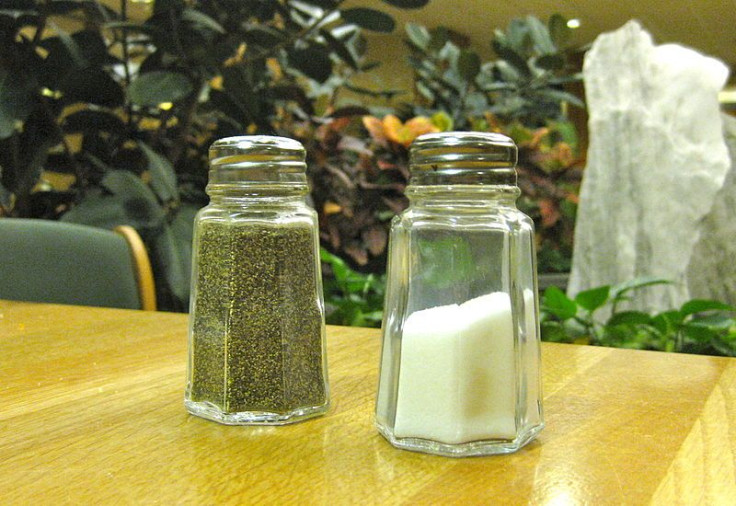
After the Latin Times reported on a new study showing that Americans' daily suggested salt intake may not be as stringent as the American Heart Association declared, many people have been wondering what to think of the confusion over how much is too much and how much is too little.
In the Latino and Hispanic community, salt is a major component of many ethnic foods. Products containing masa, or corn, that are fried or heavily ridden with preservatives have an increased salt content than a simple ear of corn.
The National Alliance for Hispanic Health offered a diagram in an informational release that asked Latinos to "choose food items with less than 5 percent of the daily value of sodium". That amount comes out to be approximately 115 miligrams of salt. Another more obvious connotation is a warning about trans fat intake. The NAHH suggests that 0 grams of trans fat should be consumed per food item.
Many believe, however, that bureaucratic and government actions banning or restricting trans fat in foods is not a constructive way to present healthy choices to citizens. An organization's suggestion, such as the NAHH's is in turn a constructive way of signifying what is healthy to consume.
In New York, recent attempted bans of sugary drinks and a successful bill dealing with trans fats have drawn the ire of individuals and groups like the American Beverage Association. Maintaining one's health often considered a personal prerogative. Some folks enjoy organic food, while others may eat at the occasional smorgasbord but in turn follow a strict exercise regimen in order to stay fit and healthy on the inside.
In Johnson County, Ind., the Centers for Disease Control & Prevention, or CDC, initiated a project geared toward the salt intake of the Hispanic community in that area. Over a 9 month period, the CDC attempted to reduce the salt intake among those of that ethnicity by 10 percent.
The study "engaged local Hispanic grocery stores and restaurants as partners" and offered suggestions as how to better market low-salt foods. The CDC also offered 2,000 bilingual "toolkits" which included low-salt recipes. Respondents reportedly said they appreciated the educational aspect of the program. Those select few who were chosen to have their blood pressure monitored saw a decrease over 4 months.
Salt, or sodium chloride, is necessary for normal bodily function, a fact often lost in the scuffle of Americans trying magnanimously to be healthy. Table salt contains Iodine, an extremely important nutrient in itself, and without it, a person's thyroid would not operate properly.
An iodine deficiency often results in a goiter on the neck, while an overdose in iodine can be equally harmful to the very sensitive thyroid gland. The thyroid is the largest of the endocrine glands, and is crucial to the exertion of energy and hormone production throughout the body.
In regards to overall mineral intake, Latinos Post reported that it is best for people to lower their sodium intake while raising their potassium intake. Potassium is equally vital to bodily function, and can be found in many unprocessed foods including fruits like bananas. "Salt and potassium work in opposing ways. So a combination of lower salt and higher potassium in our diets has a bigger effect than changing just one of those factors alone," said Professor Graham McGregor of the Queen Mary University of London in the United Kingdom.
© 2025 Latin Times. All rights reserved. Do not reproduce without permission.




